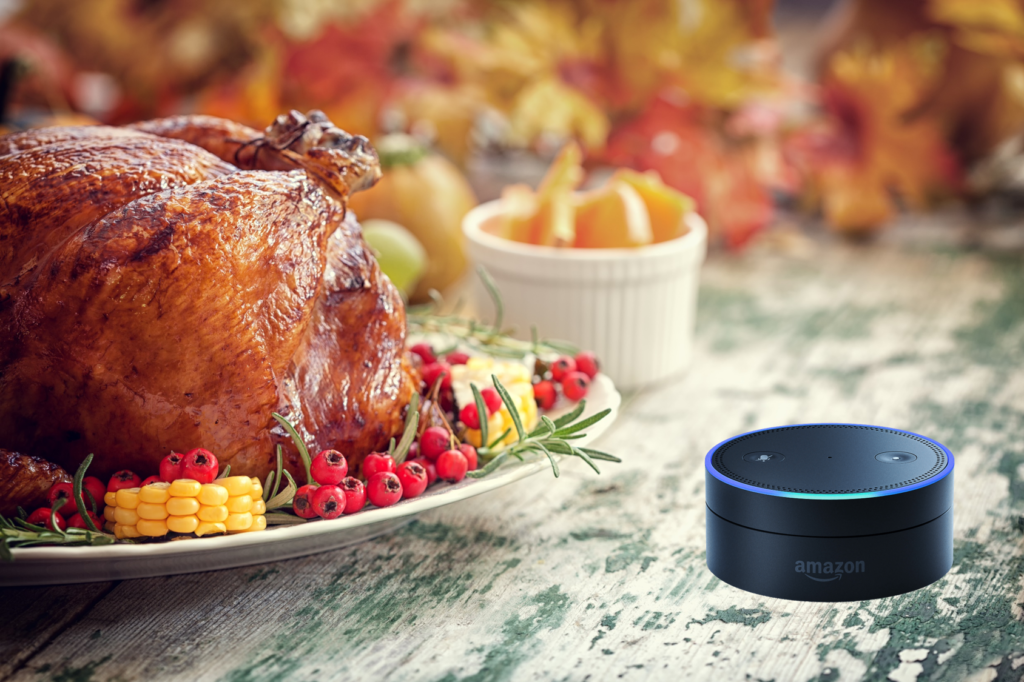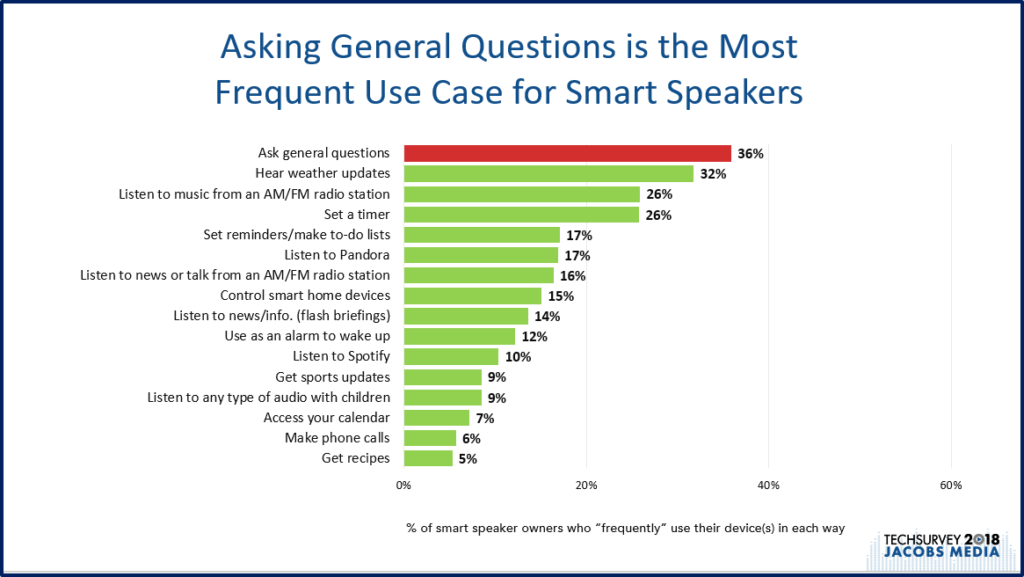
The smart speaker revolution continues to pick up steam. Heading into CES this January, we are excited to not only see what Google and Amazon will be showing, but other platforms that rely on voice recognition technology.
As the Alexa platform has moved to the car dashboard, and consumers become more comfortable speaking with a machine, it is becoming abundantly clear our brains are being trained on a Q & A platform.
This is nothing new. Since the explosion of the Internet, we’ve become accustomed to the FAQ model. As brands learn more about their customers, the questions that get asked the most often – and their answers – are a service to their users and fans, as well as an efficient way to save time and money.
Many of us our using typed or tested search to answer everyday questions like these:
How do I caulk my bathtub?
How do I tie a Windsor knot?
In iOS 12, where do I find the Screen Time app?
Are there any 4-star rated Chinese restaurants near me?
And so, it’s a logical extension that in the not-so-distant future, we will use voice to accomplish these same tasks. A key for brands is to anticipate the questions consumers will ask – and then be sure the platform and their developed skills can provide useful answers.
And that means radio stations doing more than launching their streams on smart speakers and calling it a day. What are the questions about a radio station, its music, its hosts, and other related content areas that consumers ask all the time? And how can these experiences be transformed into effective skills that serve a consumer need among the growing legions of smart speaker owners?
One of the things we’re learned with our SonicAi company is the wisdom of developing compelling smart speaker content that lives on no other platforms – a station’s air, its stream, its social media, or its podcasts.
What kinds of interesting questions, quizzes, or games can radio bake into voice platforms that will delight users, and build stronger engagement with brands? How can stations re-imagine smart speaker content to make it delightful for consumers using these devices? And how can skills be built so that consumers will want to use them again…and again?
This Thankgiving, look no further than Butterball, the company that helps us with our turkey cooking tasks on the fourth Thursday of November. Back in 1981, Butterball debuted the “Turkey Talk-Line,” which was originally a phone line. Every year, it’s one of the promotions we list on our Thanksgiving client memos. Morning shows are frequent users of this Butterball service.

Over the years, Butterball has added text, email, live chat, Facebook, Instagram, and Twitterr to their “Turkey Talk-Line” arsenal. So, Alexa is a logical extension platform that re-energizes this nearly 40 year-old idea.
And Butterball did their homework. It turns out the most frequent use case of smart speakers is asking general question. That’s the way it shook out in Techsurvey 2018, and in most research studies. So, it was a natural for the “Turkey Talk-Line” to find its way onto the Alexa platform. Marketing Dive’s Erica Sweeney reports Butterball is “all in” on the Alexa platform.

Add that to the fact that most smart speaker usage is homes, and Butterball’s logic is impeccable. Most consumers, however, are not buying products on these platforms…yet.
But it’s plausible to assume we could be asking Alexa to order is a 12-pound bird from our neighborhood Whole Foods next Thanksgiving.
For radio, it’s another reminder that simply developing a C-level skill does nothing more than check the Alexa box. It does little to enhance your station’s place on the hottest gadget since the iPhone.
Strategizing unique, compelling, and fun ways to integrate voice with your station’s music or talk position, your personalities, and your local market with your digital team is just plain smart.
The FAQ format is the way in which consumers are interacting with voice assistants named Alexa, Siri, (Hey) Google, Cortana, Bixby, and the other AI aides sure to get in the smart speaker line in the coming months and years.
The voice movement is much more than a cylindrical or hockey-puck shared device sitting on the kitchen counter or nightstand. Inccreasingly, it’s a way consumers will access their favorite stations, their music playlists, podcasts, and information they seek out.
More and more machines will be answering fan questions as search moves to voice.
As 2018 winds down, has Alexa earned a seat at your station’s table?
Increasingly, it will be used to answer critical questions – like this one:
“Alexa, can turkeys fly?”
Smart speakers will be on the menu for Techsurvey 2019, launching in January. Information and registration here.
- Traveling At The Speed of CES - January 10, 2025
- The One Thing Missing At CES? - January 9, 2025
- AI Your Commercials - January 8, 2025




Leave a Reply